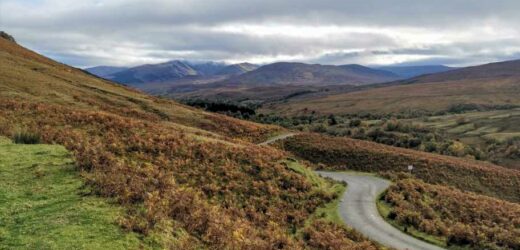A SECOND earthquake tremor hit Scotland today – less than an hour after residents were woken in the night by shaking homes.
Scots reported an initial 3.1 magnitude quake in the west of the country at 1.44am.
Almost an hour later, a 1.6 magnitude tremor was recorded at Roybridge in the Highlands.
The rumble occurred at 2.42am at a depth of 7km, according to the British Geological Survey.
It came just an hour after people in the west of Scotland were shaken and stirred by an earthquake.
The epicentre if the first tremor was about 11 miles (18km) north west of Lochgilphead in Argyll and Bute, and 88 miles (142km) north west of Glasgow.
The British Geological Survey said it was felt by more than 30 people at Achnamara, Tayvallich, Lochgilphead, Tarbert, Ardrishaig and many other villages and hamlets the region – mainly from within around 40 km (24.8 miles) of the epicentre.
Typical reports described, "we felt and heard a loud, deep rumbling", "the loud bang woke us up", "sounded like an explosion", "the house and windows shook" and "it was like rolling thunder", said the BGS.
The agency said the quake happened 12km below the Earth's surface.
Rosemary Neagle, who lives on a farm in Kilmartin Glen near Lochgilphead, said the noise of the tremor was so loud that she initially thought something had exploded in one of her sheds.
She told BBC Radio's Good Morning Scotland programme: "It kept on intensifying and the house vibrated. It rumbled on for about 10 seconds afterwards, so it was quite frightening.
"I have experienced them before here but never to that extent. The house has never shook like that in the past."
There are roughly 200-300 quakes in Britain every year, but the vast majority are so small that no one notices them. However between 20-30 are over 2.0 magnitude which can be felt over a wider area.
The largest known Scottish earthquake occurred near Loch Awe in 1880, with a magnitude of 5.2.
Earthquakes in Scotland are most often attributed to glacial rebound. Until about 10,500 years ago much of the north of the UK was covered by a thick layer of ice – which pushed the rocks down into the underlying mantle.
These rocks have been slowly rising back up ever since the ice melted, causing occasional earthquakes in the process.
The UK is also subject to tectonic stresses caused by the expansion of the Atlantic Ocean, which is slowly pushing the entire of Eurasia to the east, and from the northward motion of Africa, which is pushing into Europe from the south
The most damaging UK earthquake was in the Colchester area in 1884. Some 1200 buildings needed repairs, chimneys collapsed and walls were cracked.
Source: Read Full Article





